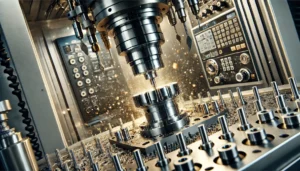Industry relies heavily on instrumentation for data collection, monitoring, managing, and control functions. However, instrumentation systems can develop problems that can affect normal business operations. Troubleshooting and rectifying the issues can be as critical as routine maintenance of the system.
Common Instrumentation Issues and Their Causes
- Instrument Failure and Lack of Spares
When the measuring device malfunction or breaks down during the operation of the plant, It results in immediate cessation of work. Such malfunction can be very costly in terms of operational hours lost or the value of end-products that could have been fabricated. Such failures arise due to poor care and maintenance, environmental conditions, or faults in fabrication. The biggest issue is when no spare parts are available because it unnecessarily drags the downtime cycle.
- Incorrect Use of Equipment
Wrong interpretations of instructions or insufficient training can lead to wrong use of tools which in turn leads to wrong values, harm to the equipment, and degradation of the process output.
- Incorrect Diagnosis of System Failures
Diagnosis that fails to address the actual cause of an issue results in ineffective solutions that do not treat the underlying problem leading to endless cycles of downtimes. The source of this is poor troubleshooting approaches or novices trying to fix the problem.
- Incorrectly Specified Instrumentation
Using the wrong tools for a certain task can greatly compromise value measurements, productivity, and even safety. More often than not, this stems from an insufficient set of criteria or a lack of expertise when it comes to choosing an instrumentation to a specific system.
- Incorrectly Installed Instrumentation
All tools that have been set to parameters that are correct to an instrument can still cease to function if the instrument is not appropriately installed. Errors of installation are typically due to electrical miswiring, incorrect exposure to alternative environments, or wrong placement of the instrument.
Troubleshooting Methodology
An outline or structure to determine the accuracy of an instrument needs to be solved or approached within a certain criterion. One of them is as follows:
- Investigation
- Engage with Operators: The aim of this technique is to find out from the operators what information they can provide for the anomaly or problem.
- Verify Equipment Usage: New pieces of equipment and their operators can be problematic. Therefore, it is better to find out if the personnel are abiding by the techniques given.
- Assess Problem Reproducibility: The steps and focus of troubleshooting can greatly depend on this feature.
- Consider External Factors: imagine strong fluctuations of temperature and electromagnetic fields. Assess the surrounding environment and scope for issues of origin.
- Review Maintenance Records
Going through maintenance history records can highlight some problems that surface often and assist in solving the current issues.
- Divide and Conquer
Test each component or subsystem separately to isolate the problem. This method helps zone in on the issue’s exact source.
- Implement Repairs
Once the root cause has been established, carry out the necessary changes or repairs. Make sure to record every step taken for future use.
- Conduct Root Cause Analysis (RCA)
After resolving the issue at hand, perform an RCA to identify any deeper influences and ensure follow-up actions are implemented to avoid repeating the same mistake in the future.
Common Instrumentation Faults and Their Solutions
- 4-20 mA Loop Problems
- Symptoms: Erratic readings, loss of signal, or incorrect measurements.
- Causes: Incorrect wiring connections, instability of the power supply, or failure of components.
- Solutions: Check for correct wiring connections and ensure power supply units are stable. Also, check other components to see if they are functional.
- Sensor Disconnection
- Symptoms: No output signal or default readings.
- Causes: Loose connections, damaged cables, or faulty sensors.
- Solutions: Check and secure all connections, replace damaged cables, and test or replace faulty sensors.
- Calibration Errors
- Symptoms: Consistent deviation from expected readings.
- Causes: Improper calibration procedures, equipment drift, or environmental changes.
- Solutions: Recalibrate instruments following manufacturer guidelines, account for environmental factors, and establish regular calibration schedules.
- Signal Interference
- Symptoms: Fluctuating or unstable readings.
- Causes: Electromagnetic interference (EMI), radio frequency interference (RFI), or grounding issues.
- Solutions: Implement proper grounding techniques, use shielded cables, and maintain adequate distance from sources of EMI/RFI.
- Power Supply Issues
- Symptoms: Instrument failure to power on or erratic behavior.
- Causes: Voltage fluctuations, inadequate power ratings, or faulty power supplies.
- Solutions: Verify voltage levels, ensure power supplies meet instrument specifications, and replace faulty power units.
Preventive Measures
Preventive actions can greatly alleviate instrumentation issues:
- Regular Maintenance: Set and stick to active preventative maintenance procedures to mitigate the problems beforehand.
- Operator Training: Help operators use the equipment effectively alongside troubleshooting and practicing safety measures.
- System Audits: Evaluate system performance on a fixed schedule and know where the weaknesses are to improve them.
- Documentation: Log all activities done in terms of maintenance, repairs, and system changes facilitated to enhance the efficiency of future issues.
Conclusion
Instruments issues troubleshooting is very critical in ensuring smooth industrial processes. Systematic approaches to understanding the common faults and devising measures to mitigate them help improve system reliability, reduce downtimes, as well as overall process efficiency. Regular maintenance checks, sufficient training, and proper logging of all system interactions are crucial for effective sustained system performance.










